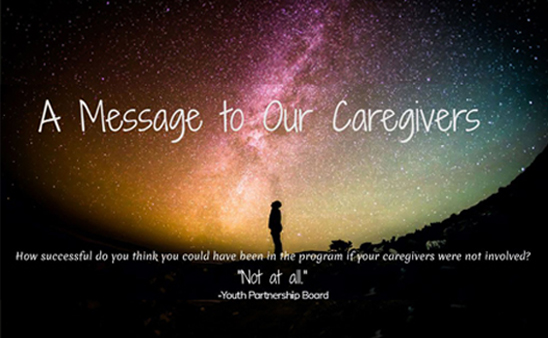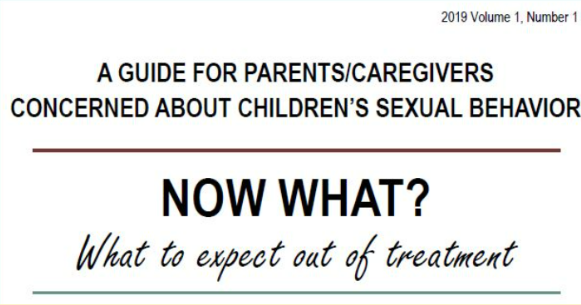
Reunification
Teens may be removed from their home in order to provide for the safety of other family members or to provide more intensive treatment. The information below will provide guidelines for making decisions and managing the process of returning the adolescent to the family. These guidelines are especially designed for families in which the adolescent's harmful sexual behavior involved or impacted another child in the home, such as a sibling or step-sibling, who lives in the home. However, the principles can be applied to other situations.
Will the Adolescent be Returned to the Family?
The adolescent may have been removed from their home by the legal or child protection system or the parents may have decided that it was better for them to live outside the home for a period of time. Many adolescents who receive treatment do return home to live with their families. Factors that lead to successful reunification of the family include implementing appropriate levels of supervision, strengthening house rules, and improving communication among family members. Whether an adolescent will return to live with their family depends on many factors that include
- The seriousness of the illegal behavior
- How long the behavior went on
- The safety, well-being, and wishes of the other children in the home
- The parents’ willingness to have the adolescent return home
- The stability of the family and how well the adolescent will be supervised by the parents
- The family’s participation in the adolescent’s treatment program and
- The adolescents’ progress in treatment and success with probation requirements.
How does Reunification Happen?
There are several ways to have an adolescent return to live with their family. Typically the probation officer, CPS worker, treatment provider, and parents will develop a reunification plan to fit the needs of the particular family. The goals are to provide maximum safety for children in the home and to return the adolescent to a more normal setting, including school, friends, and activities. While no set list of factors exists that will always lead to a successful reunification, certain guidelines can help in developing and implementing a plan.
Guidelines for Reunification
A set of general guidelines is described below that can be useful in developing a plan for reunifying your teen into the family, i.e., setting a time-line, developing rules for supervision during visitation, and increasing levels of contact between the adolescent and the younger child.
Plans for reunification should first consider the safety and emotional well-being of the victim, if the child is in the home. Listed below are suggestions for an assessment of the parents, the adolescent, and the child victim before the reunification process begins
Before the reunification process can begin, parents should
- Be clear and accurate about who was responsible for the abusive behavior
- Be supportive of all the children
- Know the details about the illegal sexual behavior, such as, how and where it happened and risky situations
- Recognize warning signs or behaviors associated with problematic sexual behavior and know how to respond
- Participate in the development of a safety plan for the adolescent
- Be able to discuss the behavior with the therapist, the adolescent, and the child and
- Know and be able to enforce the supervision rules in the home and community.
- Have described the sexual behavior in a similar way to what appears to have happened.
Before an adolescent can begin the reunification process, the treating therapist, treatment team and sometimes an independent evaluator will assess the progress that the adolescent has made toward meeting goals of treatment and probation. If the team determines that adequate progress is being made in these areas, the adolescent may be ready for visits. The adolescent needs to
- Understand the harm caused to the family, the child, and themselves.
- Be making consistent progress in treatment with no sexual or major nonsexual problems at home, at school, or in the community
- Have admitted their behavior and taken responsibility for it and
- Know and be ready to follow the rules for visitation in the home.
- Have described the behavior in a similar way to what the child victim said happened.
In addition, careful consideration needs to be given to how the child victim is doing before starting reunification. Depending on his or her age and ability to understand the process, the child victim should
- Not have been pressured to begin the process by family members who want the adolescent to return home
- Be ready for and interested in contact with the adolescent
- Have described the sexual behavior in a similar way to what appears to have happened and
- Be making satisfactory progress or have completed treatment, if it was recommended.
The reunification process can begin with the adolescent writing letters of apology or clarification to the victim and their parents as part of their treatment program. If the victim was a family member who didn’t live in the home but was visiting the family, such as the parents’ grandchild, a letter could also be written to that child’s parents. The letter to the adolescent’s parents can be read and discussed in a treatment session. If and when appropriate, the letter to the child victim can be read in a family clarification session prior to or during the reunification process. Some treatment programs use a “clarification” session that is attended by the teen, the child victim and other siblings if appropriate, and the caregivers. This session clarifies the youth’s responsibility and the rules to be followed during the visits and the reunification process.
A safety plan should be developed by the therapist, the adolescent, the parents and, when involved, the probation officer or CPS worker. Parents should set limits for the adolescent’s behavior in the home, know what the adolescent is to do if problematic situations come up, and implement consequences for breaking any of the rules. Some suggestions for a safety plan are listed below. These rules can be adjusted as the adolescent shows that their behavior has improved over time
During visitation and the reunification process, the adolescent should
- Be closely supervised (within the sight of adults who understand the need for supervision) especially when around children and in other situations with significant risk.
- Not babysit under any circumstances
- Not be in charge of children for any activity in such places as a school, church, or rest room
- Not discipline or correct children in the home
- Not go into other children’s rooms
- Leave if a child comes into their room
- Not share a room with younger or vulnerable children
- Not be involved in bathing or dressing children
- Be fully dressed when in public areas of the home
- Not have access to highly sexualized materials, including magazines, videos, television shows, or the Internet and
- Not engage in horseplay, wrestling, or tickling with children.
It is important to note that these rules do not mean that an adolescent cannot have ordinary or typical activities for their age with appropriate supervision. They should go to school, church, the mall, or restaurants with family members and be involved in age-appropriate activities that are supervised by adults such as sports activities, band, or other school events. Over time, the adolescent can be allowed to have activities that do not require close supervision as they shows that they can conduct themselves in an acceptable way.
The process of reunification can take place in steps such as the ones listed below. The process should be planned with the therapist, probation officer, CPS worker (if one is involved), parents, and the adolescent. While the steps below may not be necessary or appropriate in every case, they can serve as a guideline for planning the reunification process. The steps can be implemented on a weekly basis or on a schedule that is planned by the team involved in developing the safety plan. The length of time to implement the plan should be decided on a case-by-case basis and can last from a few weeks to several months, depending on the circumstances and the successful completion of each step.
Suggested steps for reunification are as follows:
- Letters of clarification or apology written
- Determination of readiness of the adolescent, the child, and the family
- Development of a safety plan
- Phone calls between the adolescent and the child, monitored by the parent or therapist
- Family clarification session with the child present, if appropriate
- Supervised visits out of the home, in a park, restaurant, or another family member’s home, with the child present
- Supervised visits in the home for two to four hours
- Supervised all-day visits in the home
- Supervised two-day visits in the home
- Overnight visits in the home
- Weekend visits with overnights
- Extended visits, such as during a holiday period or spring break
- Adolescent returns home
Based on research that shows the long term importance of sibling relationships, it is important for the teen, the child victim, and the other siblings to interact in healthy, appropriate ways. While some physical contact, such as wrestling, tickling, etc., should be omitted, appropriate contact such as brief hugs, or high fives can be encouraged, when appropriate and wanted.
It is strongly recommended that the reunification process be done while the adolescent is in treatment and, if he is on probation, before the probation period ends. This timing will provide the necessary professional involvement, assistance, and oversight to give the process the best chance of being successful.
When Should Reunification not be Considered?
The following factors are potential indicators that the adolescent, child victim, or family is not at a point where the reunification process should be implemented. These factors should not be taken as definite reasons not to discuss reunification, but they can help the family, the providers, the probation officer, and child protection staff decide the overall readiness of the family to begin the process.
Reunification should not be considered when
- The caregivers continue to deny the abuse occurred
- The caregivers have not provided consistent, appropriate supervision during the reunification visits
- The abuse was extremely harmful to the child victim
- The victim has significant discomfort when discussing the topic it is expected, however, that a child might have some uncertainty about discussing the issue
- The child continues to have significant trauma symptoms or serious response to the abuse
- Evidence exists that the victim has been pressured to agree to reunification and/or
- The adolescent has a recent history of significant aggressive or violent behavior.
Not all of the above factors taken alone would automatically stop the reunification process however, each of them should be given careful consideration before starting the process or if they occur as the process is implemented. Other factors may need to be considered, but these will depend on the specifics of each individual case.





















